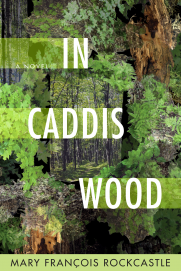Peculiar Ground Lucy Hughes-Hallett (2018)
Walls: perimeter walls, border walls, the Berlin Wall, walls between persons, walls between peoples, the wall around the Garden of Eden, walls of inclusion, walls of exclusion, the walls of Jericho that came tumbling down. Walls both solid and figurative are found everywhere in Lucy Hughes-Hallett’s fascinating foray out of biographical writing into fiction.
The “peculiar ground” of this novel’s title is a fictional Oxfordshire estate, Wychwood, a country house and huge expanse of land surrounded by a high rock wall. Readers drop in on the construction of this wall in 1663, with a first-person narrative by John Norris, the landscaper who is rearranging the terrain all around the estate, creating a British version of Eden in conjunction with the building of the wall. We get fully settled in at Wychwood, meeting the owners, the many people who tend to the owners and their property, and the mysterious and possibly magic-making groups who glide through the surrounding forests.
Then Hughes-Hallett whisks us away to 1961, the year when a barbed-wire fence is suddenly erected one summer’s night in Berlin, and armed guards are posted to keep East Berliners from heading to the West. The British reactions to this actual Cold War gambit are the backdrop to an extensive update on the Wychwood estate and its twentieth-century inhabitants. The wall around the pastoral paradise of Wychwood still stands, in glaring contrast to that threatening one in Berlin. Or is it so different? Various assemblages of outsiders visit, invade, or otherwise challenge the enclosure of Wychwood as the narrative moves to 1973 and then to 1989. We meet direct descendants of characters from the 1663 segment of the story as well as new blood. But tragedy can visit in the twentieth century just as in the seventeenth.
Perhaps I was especially taken with Peculiar Ground because of its embrace of the seventeenth-century tradition of poems in praise of country homes. Ben Jonson initiated this subgenre in 1616 with “To Penshurst,” written to curry the favor of a wealthy patron of the arts. I found many echoes of this tradition in Peculiar Ground, with Hughes-Hallett’s sumptuous and specific descriptions of the verdant British landscape. Horticultural references slide right on over into other descriptions. A lord of the manor tells his lady, “I will cover you with Brussels lace, as the roadside is covered with a froth of flowers this Maytide.” (423) In the twentieth-century section, a dress is made of “bias-cut Liberty lawn covered with convolvulus, silvery-green pleats like the chitons of Athenian caryatids.” (102) When a young female character visits her aunts, she loves “to feel the slithery fineness of face powder in a gilded round cardboard box . . . to sense the odd peacefulness of their house, where no one had to be decisive or busy, or do anything other than exchange fragmentary quotations from the works of unfashionable poets, and wonder aloud when it would be time, finally to throw out the dusty arrangements of dried flowers.” (123) Such sentences made me stop and revel.
Peculiar Ground has so many layers—walls, gardens, magic—that it demands the close attention of the reader. I put bookmarks at the pages with the map of the estate and with the dramatis personae so that I could turn back frequently. But the reward is a richly detailed portrait of a particular and peculiar place on Earth. There are also morals to be found, especially for the current international political situation, in which refugees and other migrants face walls both literal and metaphorical. Check out John Norris’s comment during the plague of 1665, when the gates to Wychwood are locked: “Here, those suspected of being diseased are kept without the wall. In London they are kept walled in.” (386) As the plague threat retreats, the lord of Wychwood speaks condescendingly to his underlings, inadvertently summing up, “It is not upon heaps of stone that our safety depends, but upon the loyalty of our friends.” (429).
If you like Peculiar Ground, you might want to read Edward Rutherfurd’s The Forest (2000), another British saga about magical woodlands. And on this side of the Atlantic, see my review of Annie Proulx’s Barkskins (2016), set in the forests of Canada and the northern United States. For different fictional approaches to Berlin and the Berlin Wall, see my reviews of Here in Berlin by Cristina García (2017) and Go, Went, Gone by Jenny Erpenbeck (2015/2017).





